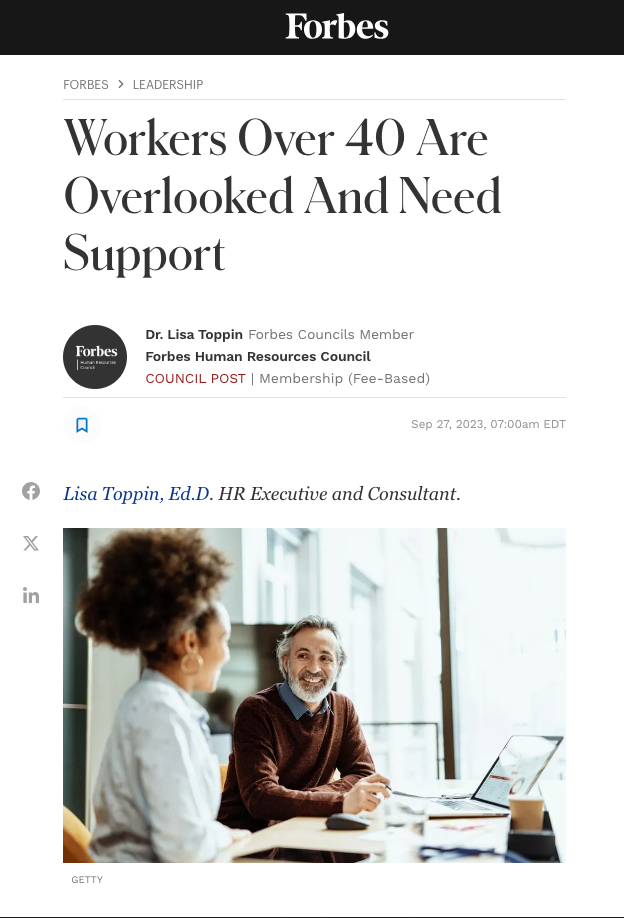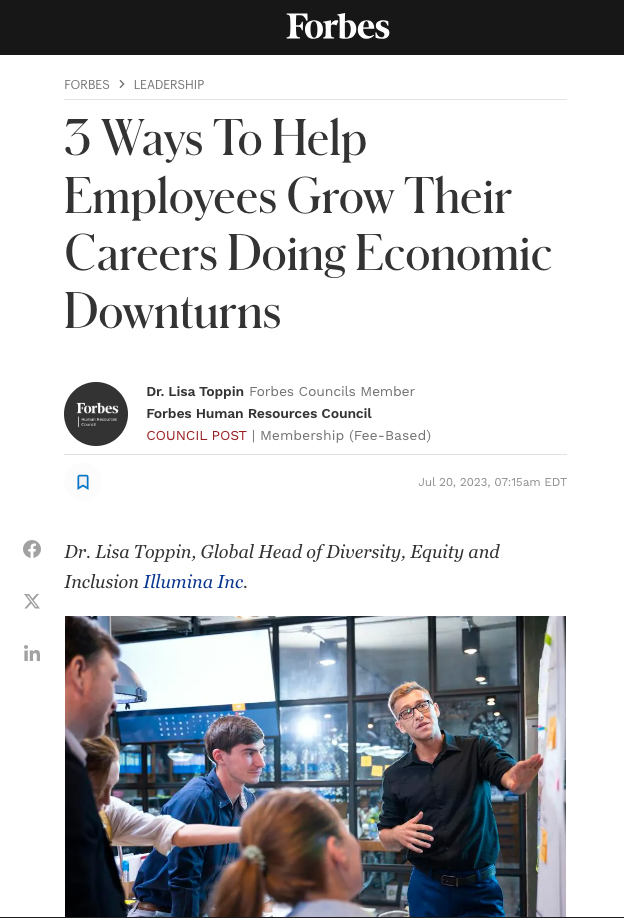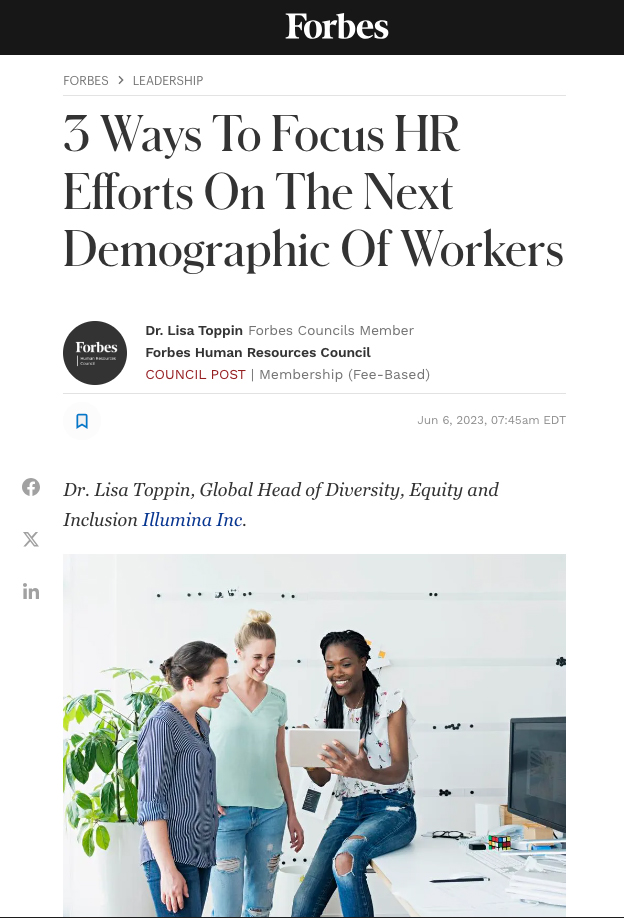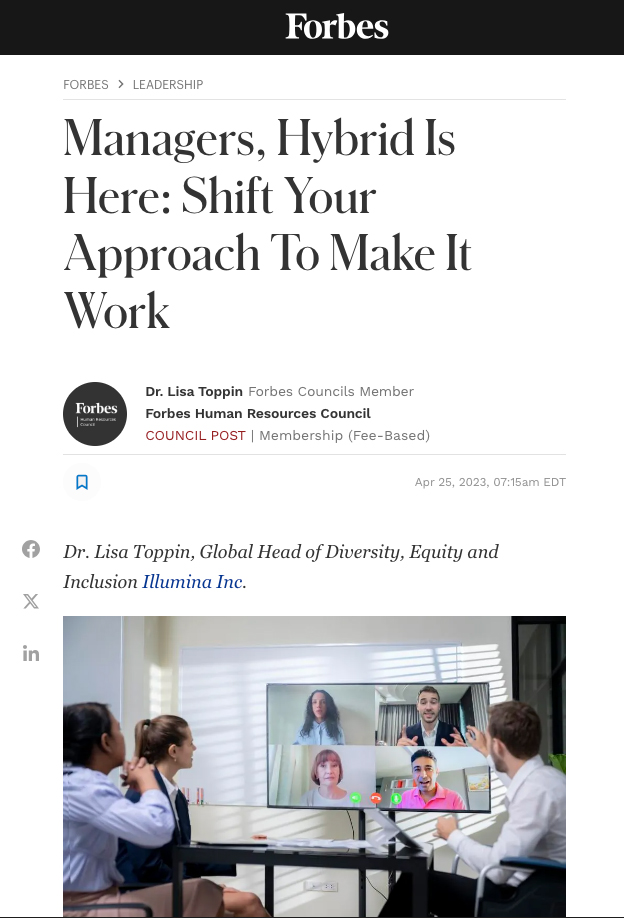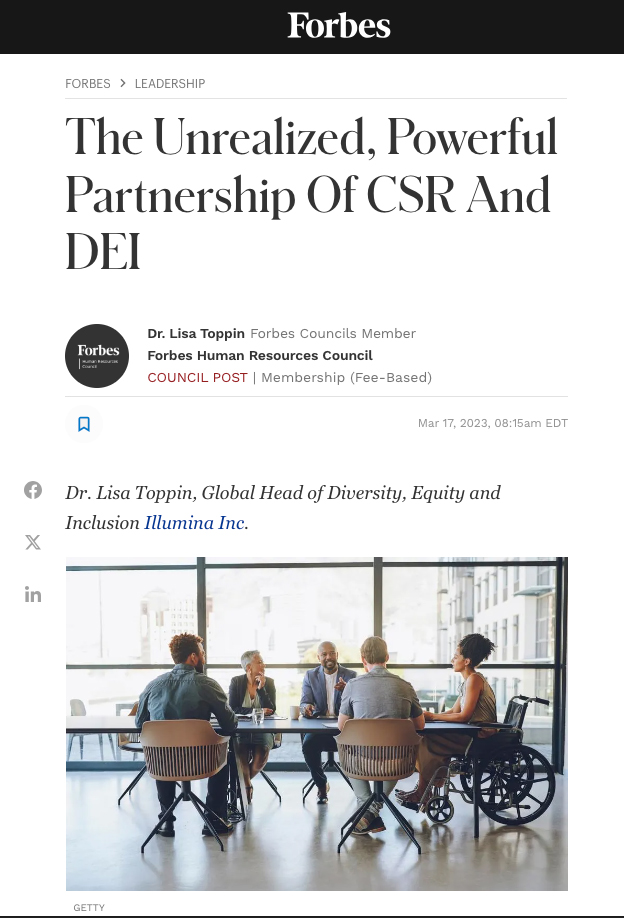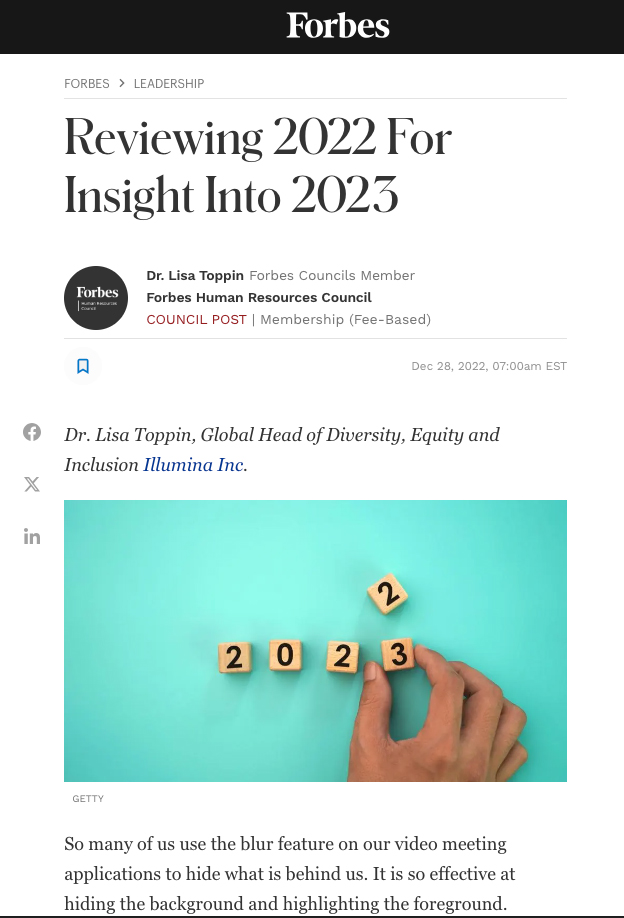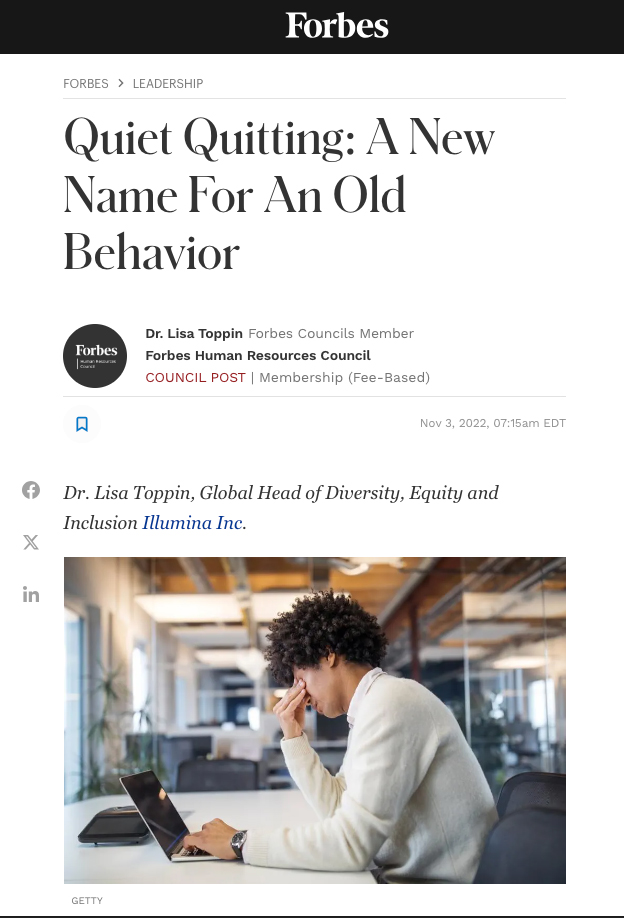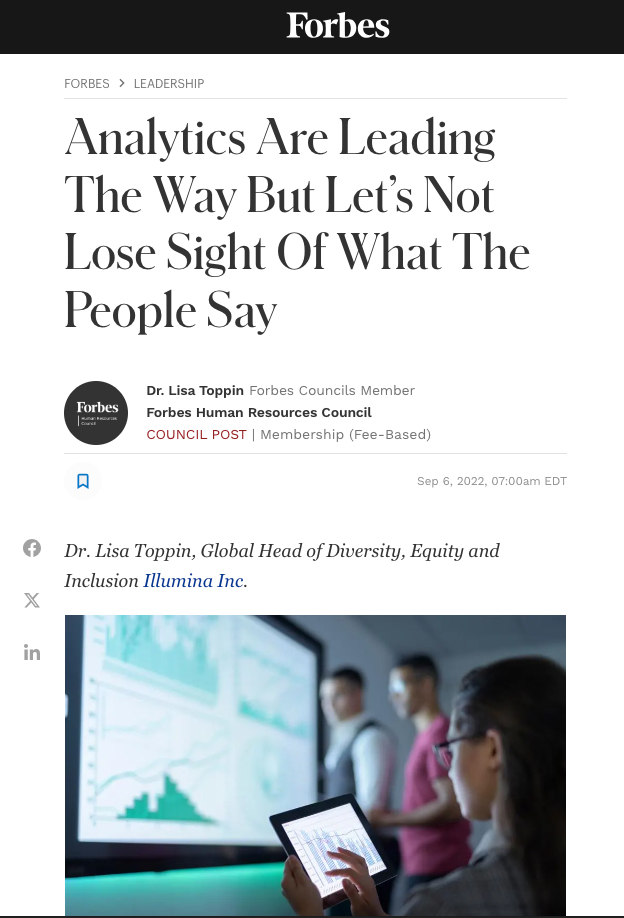Articles by Dr. Lisa Toppin
Uncover a world of innovative HR strategies and leadership insights with Dr. Lisa, a distinguished member of the Forbes Human Resources Council. Here, you’ll find her thought-provoking articles published on Forbes, Gallup, and other journals, each offering a unique perspective on crucial topics like diversity, equity, inclusion, and effective management practices. Browse through this curated collection to enrich your understanding and inspire transformative approached in your own organizational context. Each piece serves as a window into the expert strategies that can help steer your business towards success in a competitive landscape.
Strategic analysis and consulting for meaningful change
Ready to transform your career?
Partner with me, Dr. Lisa Toppin to strategically enhance your work life. My expertise in organizations and decades long experience in Human Resources gives me the background to help you navigate any change within an organization. I offer comprehensive support to you as a leader, with exploration of your skills and talent coupled with goal setting. My particular ability to understand the complexity of corporate relationships and guide you through challenges with clarity and ease. You will feel empowered and regain your full agency over your next steps, your career and thus, your life.
Feeling stuck in your career? My step-by-step course helps you rediscover your strengths, reignite your purpose, and confidently plan your next move.
Bring out the best in your team or audience with impactful presentations and interactive workshops. I provide actionable strategies on DEI, career evolution, and unlocking individual talents to inspire growth and meaningful change.
Partner with an expert who helps organizations tackle their most pressing workplace challenges. I provide strategic consulting on talent development, organizational culture, and inclusive practices to align teams, strengthen engagement, and drive sustainable success.
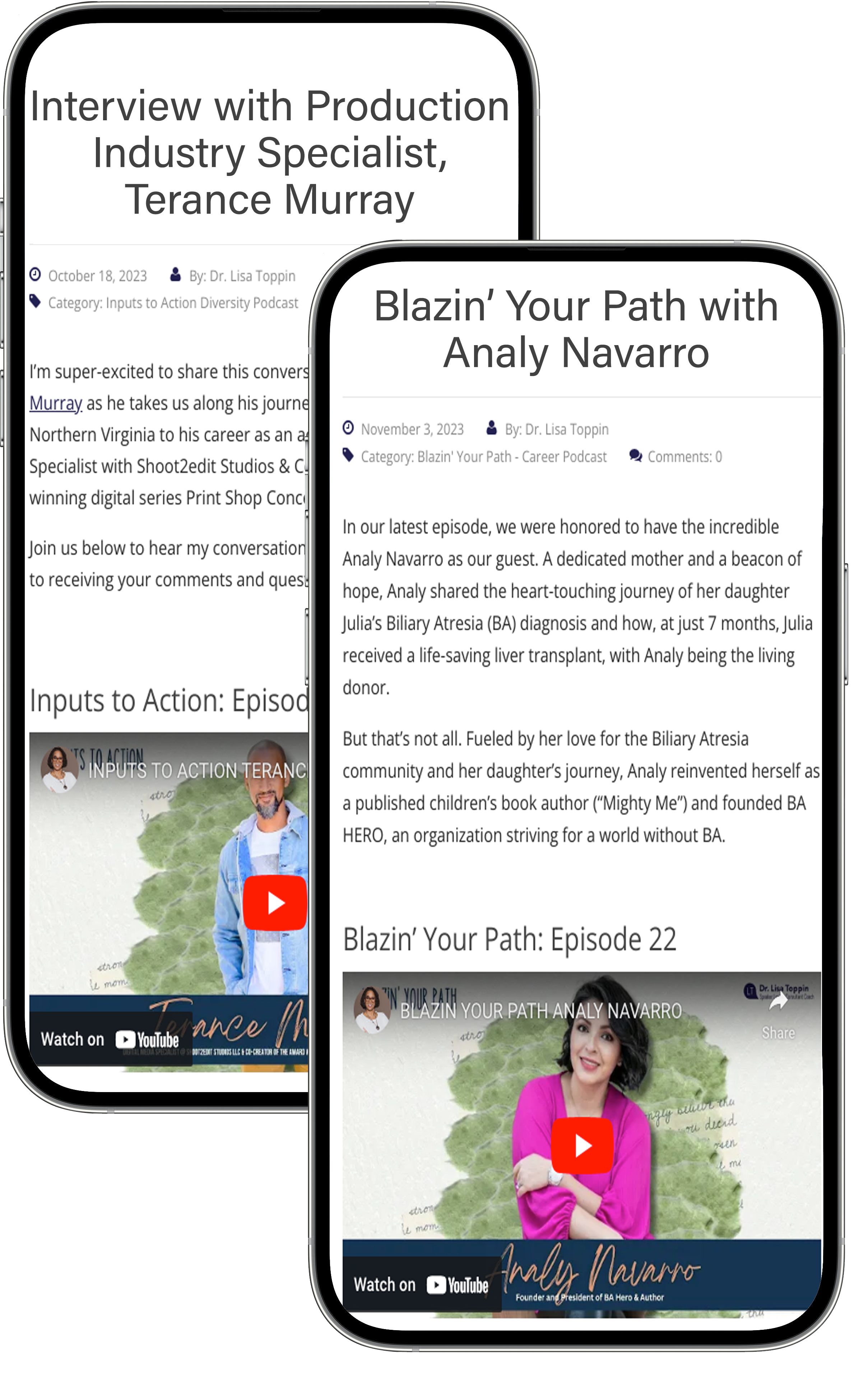
Explore leadership and DEI insights with Dr. Lisa Toppin through her engaging podcasts and insightful blog. Discover ‘Blazin’ Your Path,’ where powerful stories of women achieving success in diverse fields are highlighted, and ‘Inputs to Action,’ which showcases individuals making significant impacts in their communities. Each podcast episode is crafted to inspire and empower listeners to make meaningful changes.Dr. Lisa’s blog further explores these themes by addressing real-world DEI challenges, management strategies, and personal development in the workplace. Enhance your understanding and skills in creating inclusive environments by diving into her rich, accessible content. Join Dr. Lisa in transforming insights into action with every post and episode.

Words of Wisdom for Growth
Through her years of experience, Dr. Lisa helps you find your strengths,
understand them, and use them for personal growth.
Service Packages
Restless and Ready $750
This 5-session package features a full strengths finder assessment and email check-ins.
One and Done or Refining Tune-ups $150
This package features a la carte sessions.
The Family Experience (for 4) $450
This package includes a Full Strengths finder Assessment and a 3 hour block of Understanding Strengths, Adult Review, Children review, and family review.
Why people need a Health Coach
First-Hand Advice
Broad experience is always a bonus.
Huge Selection Of Green Coffees and Herbal Teas!
Only our shop will take care of that you get the highest quality of goods aimed at correction of your shape and improving your general mood and life satisfaction.
Request a free consultation
Receive the freedom of a non-judgement zone to make clear life choices!

